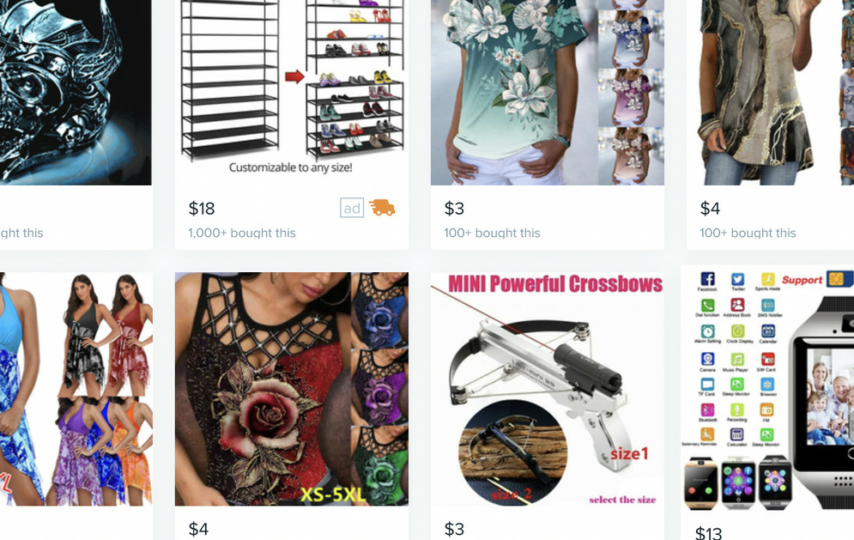[ad_1]
If you need a $2 pair of jeans, a $1 pop-up pool for your backyard, and waterproof sheets for $0.50, Wish is the online store to find all that and more. Or at least it was.
A New York Times deep dive tracks the arc of the internet’s most nonsensical shopping destination known for its array of bizarre merchandise priced impossibly low. The story paints a picture of an e-commerce juggernaut’s rapid ascent that ultimately caused its own downfall when growth was prioritized over the basic tenants that shoppers expect — products arriving in a timely fashion, for example, but also more essential things, like listings being real at all.
One anecdote in the piece proves the impossibly low prices were, in fact, too good to be true — because Wish had posted the listings knowing they weren’t real, according to the Times.
There were unbelievable bargains on “bestdeeal9,” a store hosted on the e-commerce platform Wish, including a $2,700 smart TV being sold for $1 and a gaming computer advertised for $1.30.
But none of the offers were real, and Wish knew it.
The company, an online novelty emporium that had more than $2 billion in sales last year by dangling hard-to-believe discounts, created “bestdeeal9” as an experiment. Listings that had been removed for violating Wish policies were reposted on “bestdeeal9” and used in part to track whether shoppers complained when their orders never arrived.
Employees pushed back on the fake store, from which more than 213,000 people purchased before it was shut down in 2020.
Employees told the Times that bestdeeal9 was a symptom of problems at Wish as the company let customer service fall to the wayside and instead focused on growing the business. Wish spent more than $1 billion on sales and marketing last year — you might recognize the company’s logo as one affixed to Los Angeles Lakers jerseys. The company rented a Bel Air mansion for influencers to make content at, now available to lease for $300,000 a month. And its digital ad strategy was like “throwing spaghetti on the wall and seeing what sticks,” Jennifer M. Grygiel, an associate communications professor at Syracuse University, told the Times.
Scammy set-ups like bestdeaal9 were too much even for Wish shoppers, who weren’t exactly expecting white-glove service. Items often took weeks to arrive, and there is an entire genre of memes poking fun at the difference between what the Wish listing advertised and what actually arrived. The company’s user base and revenue have plunged in the last year, the Times reports, as Wish tries to turn things around.
Even with stricter quality controls on products, merchants and delivery, revenue in Wish’s most recent fiscal quarter plunged 76 percent from a year earlier, it reported on May 5. There were 27 million monthly users at the end of the first quarter, compared with 101 million a year earlier. The company went public in 2020 at $24 a share and now trades at less than $2.
“Companies are supposed to evolve and mature,” said Christian Limon, who was Wish’s head of growth and acting chief marketing officer in 2016 and 2017. “The easiest way to say what happened is that what worked for it stopped working and it never evolved.”
Internally, employees describe grueling working conditions, high turnover, absentee founders, and concerns that were ignored. In March, several hundred employees lost their jobs. More recently, Wish says it is trying to reverse course with new leadership and more accountability measures for merchants on the platform.
Read the report here.
[ad_2]








